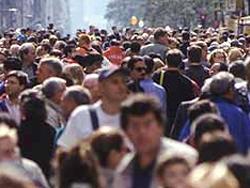Pandemic-Driven City Population Declines Continued in 2021
New York, NY, May 26, 2022-Big-city population declines deepened across the U.S. last year as the pandemic continued sending Americans in search of more space, according to census figures released Thursday and reported by the Wall Street Journal.
“The largest cities lost a greater share of residents than small- and midsize cities during the year that ended July 1, 2021, new estimates show. Collectively, in the nine cities with more than one million people, the population fell 1.7%, a loss of 419,000 residents. Only two cities in that group grew: Phoenix and San Antonio.
“New York, the nation’s largest city, lost 3.5% of its residents, or about 305,000 people. The second-largest city, Los Angeles, lost 1%, or 41,000 people, while the third-largest, Chicago, lost 1.6%, or 45,000 people.
“San Francisco’s population fell 6.3%, a loss of 55,000 people. It and Chicago have lost so many people that their populations have fallen close to their 2010 levels.
“Several large cities that had logged gains in recent years saw losses, including Denver, Nashville, Tennessee, Seattle and Atlanta.
“The nation’s midsize cities, or those with populations of 500,000 up to one million, also saw their populations edge down. Together, they declined 0.7%, losing 148,000 people. The group includes 28 cities, with San Jose, California, the biggest and Kansas City, Missouri, the smallest. Twelve of the 28 in the group grew last year.
“Cities with fewer than a half-million people in effect saw flat growth. The group that ranges from 250,000 up to a half-million residents collectively lost 0.1% of its population, while those with 100,000 up to 250,000 people together grew 0.1%.
“The onset of the pandemic in March 2020 set off an initial wave of moves out of cities. The latest census figures suggest that the shift continued as the pandemic dragged on and combined with other economic and demographic forces that began pushing Americans into suburbs and exurbs during the previous decade.
“Millennials, born between 1981 and 1996, are entering their prime childbearing years, prompting many to seek family-friendly homes in better school districts. A protracted slump in housing construction and record low mortgage rates drove up housing prices, especially in coastal metro areas, prompting migration to lower-cost areas even before the pandemic. Many in the growing ranks of retired baby boomers also fed the shift, as they cashed out of more- crowded, higher-priced markets.”
